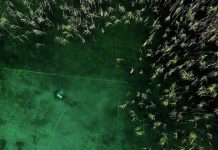Africa-Press – Namibia.
The tourism ministry has allocated N$346 million towards the wildlife and protected area management programme for the 2025/2026 financial year.
This programme focuses on national park management, wildlife protection, human-wildlife conflict mitigation and Namibia’s Community-Based Natural Resource Management (CBNRM) Programme.
Motivating the budget in Parliament, minister Indileni Daniel said for the 2024/2025 financial year, the ministry spents close to N$9 million in disbursement of 86 communal conservancies to be able to compensate for livestock and crop losses caused by wildlife.
An additional N$3.4 million was allocated to communities outside conservancies to compensate for human-wildlife conflict incidents, including loss of life, injuries and property damage.
“We recognise the challenges posed by elephants, crocodiles, buffaloes and predators such as lions, leopards and hyenas. This year, our focus is on practical solutions, including the installation of alternative water points for elephants, construction of protective walls around community water sources, and predator-proof kraals to safeguard livestock,” said Daniel.
She revealed that the ministry is enhancing crocodile enclosures, supporting wildlife monitoring teams with camping allowances, and ensuring the maintenance of vehicles and provision of fuel for effective human-wildlife conflict management.
Despite recording 83 rhino and nine elephant poaching cases in 2024, the ministry remains committed to fighting illegal wildlife and plant trafficking. As part of strengthening conservation efforts, 50 young Namibians will be recruited into the anti-poaching unit to focus on protecting high-risk species such as rhinos, elephants and pangolins.
One of the key projects earmarked for this financial year include the ongoing upgrade of the Etosha National Park boundary fence, which spans 824 kilometres across the Oshikoto, Oshana, Omusati, Otjozondjupa and Kunene regions. “Originally constructed in the 1970s, the fence has deteriorated in several sections, and since 2020, 147 kilometres have been reconstructed, with 677 kilometres remaining,” she stated.
Daniel highlighted several additional measures to reduce human-wildlife conflict, including the protection of water infrastructure from elephant damage, the deployment of GPS collars to monitor high-risk animals, and the development of elephant-friendly water sources.
In support of wildlife-based economic activities, Indileni said the ministry captured and translocated 57 animals, including plains zebras, giraffes and oryx to various conservancies and protected areas. Additionally, 240 plains zebras were translocated to selected beneficiaries under the Wildlife Breeding Stock Scheme, which has created more than 100 job opportunities through tourism concessions awarded to communities living in or near State-protected areas.
“As tourism concessions provide improved livelihoods, economic benefits and employment for our people, seven concessions in national parks were awarded in 2024. Eleven more are planned for award this financial year,” Daniel said, acknowledging recent public concerns. “I am aware that some specific concessions have raised public outcry. However, these matters are receiving the ministry’s attention.”
Regarding environmental and natural resource protection, the minister said N$189 million has been allocated to support the implementation of the Environmental Management Act, Access to Biological and Genetic Resources and Traditional Knowledge Act.
For More News And Analysis About Namibia Follow Africa-Press






